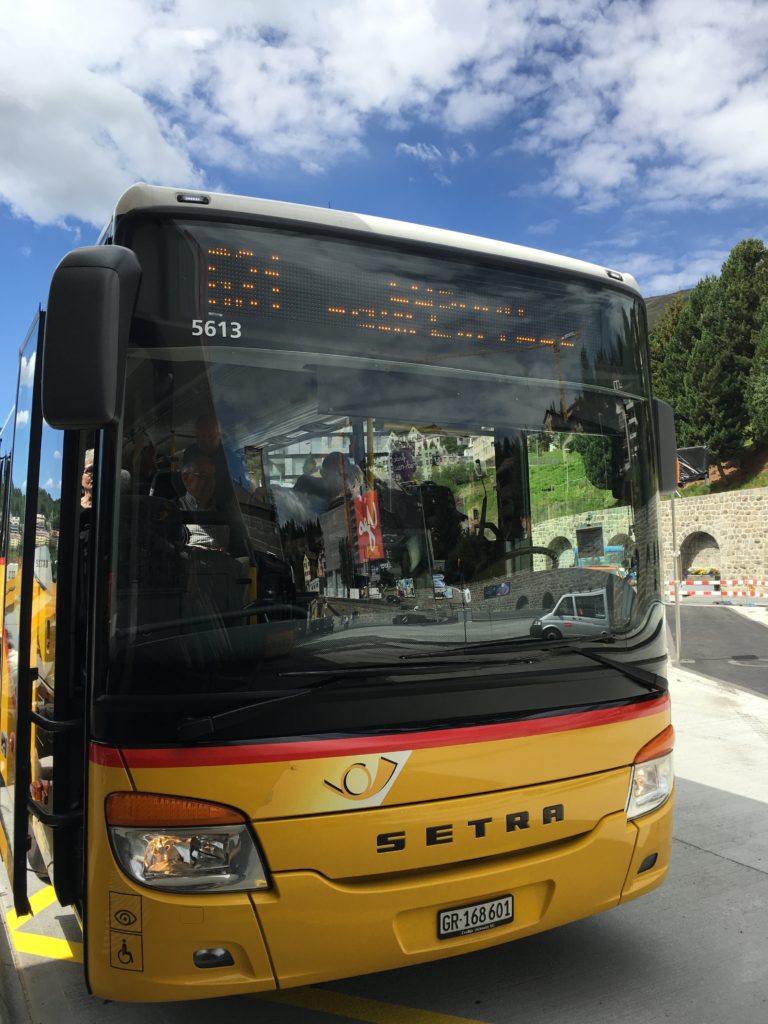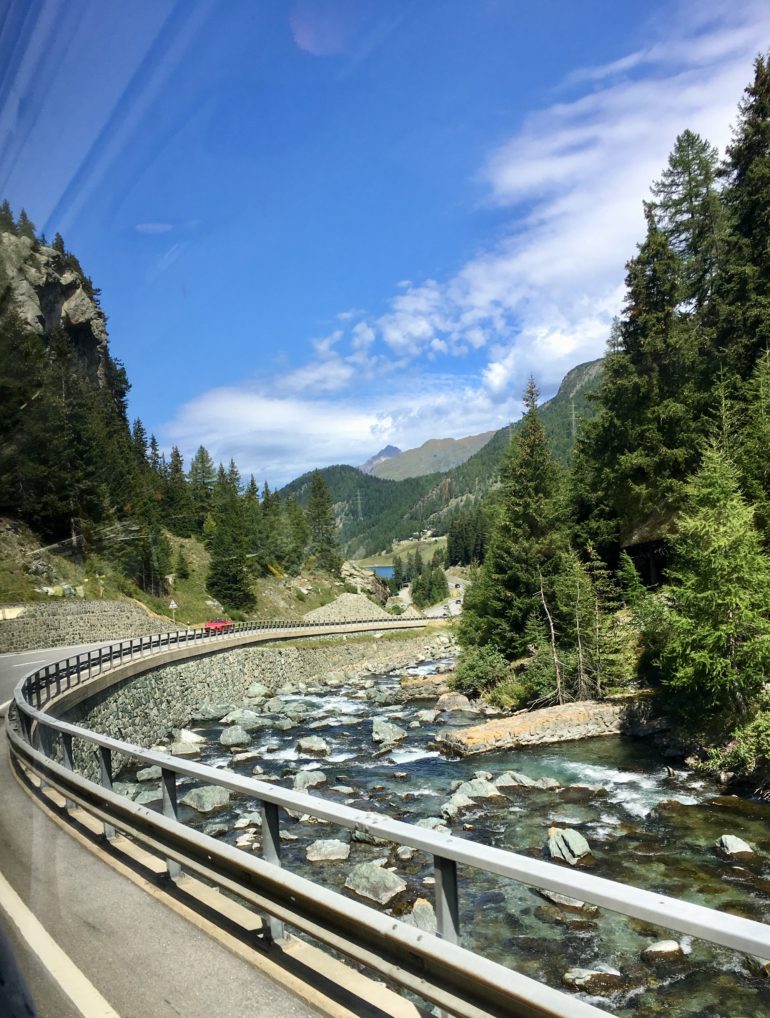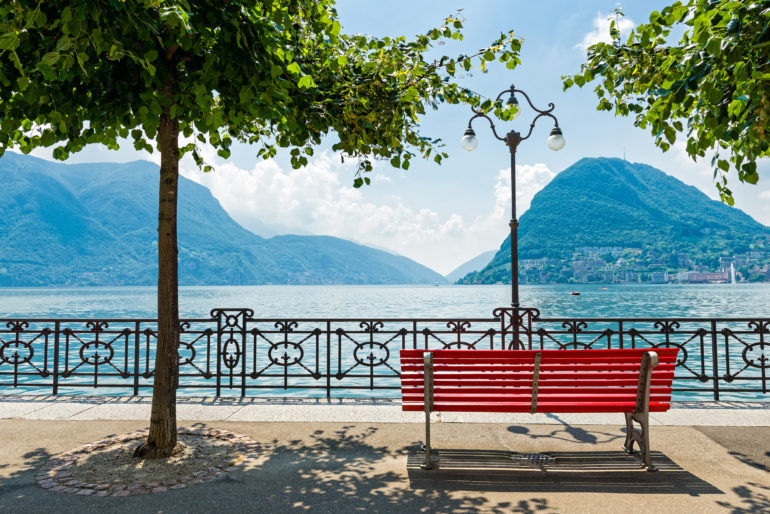Switzerland boasts numerous ways to get from Point A to Point B. You can go slowly by foot, walking a stretch of hiking trail in an alpine pasture or near a mountain peak. A bike, whether battery-assisted or powered by muscle, will move you a bit quicker. Then there are cable cars, gondolas, chairlifts, funicular trains, steam trains, high speed trains, and the iconic Swiss Post Bus. Bright yellow, with a sing-song three tone horn (a snippet from the William Tell Overture) to warn oncoming traffic around blind corners, you’ll find these buses in even the most rural corners of the country. In line with Swiss efficiency, they evolved to carry both passengers and mail around the country, and now, they can take you to any nearly corner of the Swiss Alps, no matter how remote. This past summer I was lucky enough to take the specialty Palm Express Bus on a wonderful 4 hour journey from St. Moritz to Lugano.

The route starts from the high mountains of the Engadine region in eastern Switzerland, near the Austrian and Italian borders, to Lugano, a place of sun and palm trees, where the Alps meet the Swiss and Italian lake country. Before you take the trip, you’ll want to spend time visiting the Engadine region. St. Moritz, where the bus departs, has reached worldwide fame for being a chic and stylish holiday destination. Outside of St. Moritz, many beautiful regions in the Engadine have an off-the-beaten-path feel, like the Swiss National Park near Zernez. The National Park’s goal is to protect natural habitat, unaltered by man. So, rather than being a hive of activity, the National Park is a quiet region lacking farms and villages and filled with wildlife. In many villages in the Engadine, tradition and a sense of timelessness remain strong, barely dented by tourism, as in tiny Guarda or Zuoz. Pontresina, is a good mountain town, a great base for hikes and excursions such as the Bernina Express train, the Diavolezza cable car, the Muottas Muragl funicular, and even the Languard chairlift (followed by a short walk to Paradis hut).

Between St. Moritz and Lugano, the bus travels over the Italian border and back, ending on Swiss soil. The trip brings you over high mountain passes, where glaciers are in clear view, down to lower elevations where palm trees and crystal lakes beckon. The Maloja Pass at 5,955 feet connects the Engadine with the Bregaglia valley, with an incredible serpentine road winding down into the valley. Luckily the bus has large clear windows to take in the majestic surroundings. On the day I traveled, in late August, the bus was about two thirds full, which gave me a variety of seats to choose from. Seat reservations are required and can be made until 8:30 on the day of travel. Reserving seats well in advance is smart during the high summer season. The Palm Express bus runs once/day in each direction, leaving St. Moritz at 10:25 and Lugano at 15:31. You can reserve online at www.postauto.ch
The most impressive thing about the Maloja Pass is the difference between the north and south side. Approaching from the north, the valley is surprisingly flat, passing a number of beautiful mountain lakes. Once over the pass, the south side drops steeply and quickly down into Bregaglia, where you’ll begin to notice your first Mediterranean-like influence. At numerous points along the journey, I marveled at the engineering required to build bridges and roads in such steep landscapes.

On the descent from the Maloja Pass, the bus takes 12 hair-pin bends on a winding road. The impressive beauty of the snow-capped summits found at the higher elevations soon gives way to the southern charm of the Bregaglia valley. The bus crosses into Italy at the Castasegna municipality border, and you’ll need to have your identification handy for a border check. Once in Italy, the bus stops for a 20-minute break in Chiavenna, where you can stroll through the markets, stretching your legs, taking in some fresh air, and possibly grabbing a cool drink under the shade of a swaying palm tree.

The last part of the journey brings you along the well known Mezzola and Como lakes, where deep blue water sparkles with warm sun. You’ll see holiday villages dotting the shores in places you might one day return to explore. After a precise 4 hours you’ll find yourself standing at the Lugano train station looking down over the lake. The whole city is situated on a hillside. Old stone stairs built into the roadways bring you down to the pedestrian center, or there’s a short train that cuts out the hill if you prefer to save your knees.

Lugano is located in the sun-splashed Italian-speaking region of Switzerland known as Ticino. This is where the Alps meet the Mediterranean (not really, but it sure feels that way). You won’t find huge mountains here like in other parts of the Alps. Instead the area offers up beautiful palm tree-lined lakes, forested hills, and a perfect, sunny reason to slow down and relax for a day or two. Lugano is actually a rather small city of about 50,000 – similar in size to Lucerne – and counts as one of Switzerland’s prettiest cities. Lugano boasts a pedestrian-only downtown core, filled with piazzas and cafes, and is great for shopping, people-watching, swimming in the lake and short excursions to nearby sights. The region itself has much to offer, such as the Monte Salvatore lift above Lugano and the scenic valleys above nearby Locarno. Don’t hesitate to slow and down and enjoy the region on your trip here!






